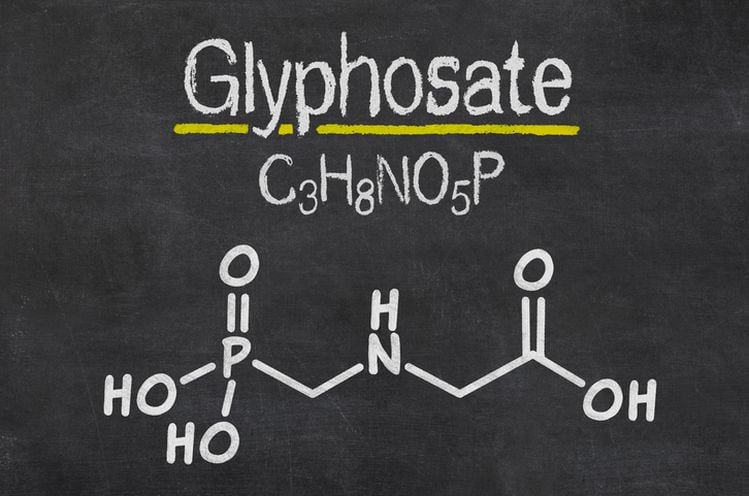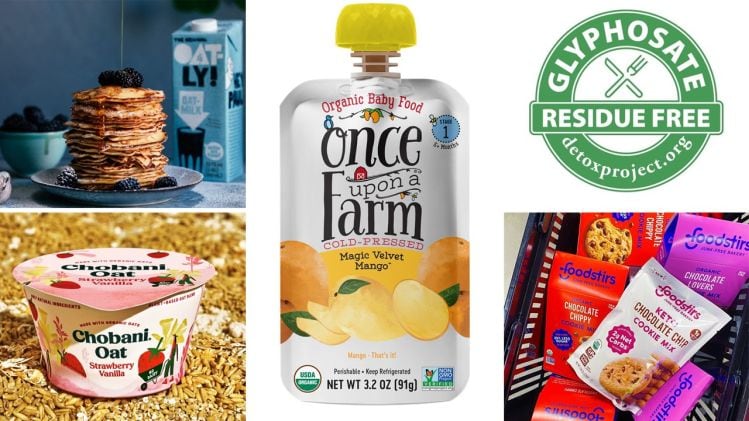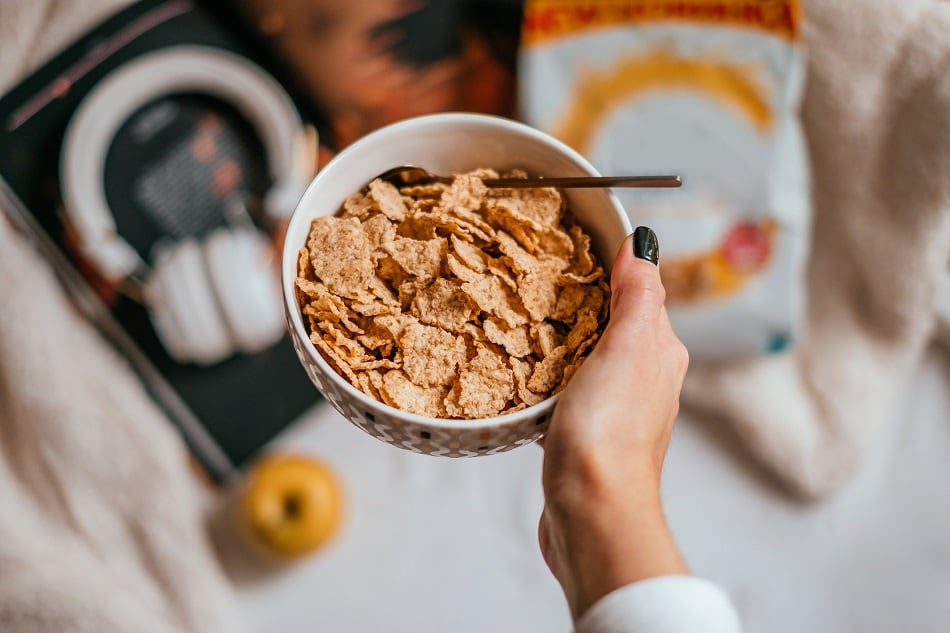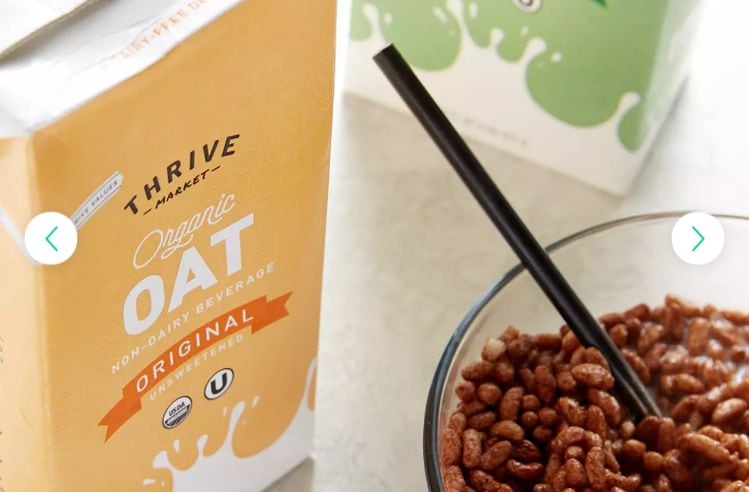Glyphosate is best-known as a herbicide (weedkiller) used on crops genetically engineered to be resistant to it such as soy and corn.
However, its presence in bread, oatmeal and other products made from oats, wheat, barley, and other Non GMO and organic crops is largely due to its application as a pre-harvest drying agent or desiccant, claims The Detox Project, which says glyphosate-based herbicides are now sprayed on 70+ crops from oats, wheat, and barley, to almonds, apples, dry edible beans, lentils, chickpeas, peas, grapes, rice, and sunflowers, with unknown long-term effects.
According to the Environmental Protection Agency (EPA), “these trace amounts are not of concern for the consumer.”
In a report released this morning, however, The Detox Project claims the detectable levels in bread, grains, pulses, and other healthy foods purchased from leading grocers sent to an ISO 17025 certified third-party lab in California for glyphosate residue testing using mass spectrometry in summer/fall 2021, are “alarming” and “dangerous.”
It also described glyphosate's use as a drying agent as 'off-label,' although the herbicide is registered in the U.S. for preharvest weed control in wheat and other conventional field crops.
‘Some of the highest levels of glyphosate are found in foods marketed as Non-GMO’
The testing - funded by sustainability-focused nonprofit the Rose Foundation - revealed glyphosate levels ranging from 13ppb on Whole Foods Organic Steel Cut Oats, to 1,040ppb on the retailer’s whole wheat sandwich bread, said The Detox Project, best-known for its glyphosate-free certification seal on products from brands including Thrive Market, Oatly, Chobani, Planet Oat, and Once Upon a Farm.
“It is not without a pinch of irony that some of the highest levels of glyphosate are found in foods marketed as Non-GMO, which means they do not contain genetically engineered ingredients, since consumers buy these products to avoid Monsanto’s (now Bayer’s) GMO ingredients, but are now exposed to high levels of their bestselling weedkiller instead,” observed The Detox Project director Henry Rowlands.
“Of the products that were tested, a range of whole wheat breads contained the highest levels, alongside chickpeas and Quaker Oats. In what may be a surprise to many consumers, 18 of the 26 Non-GMO labeled products tested contained glyphosate, including two of the highest five levels discovered (535 ppb and 1,040ppb respectively).”
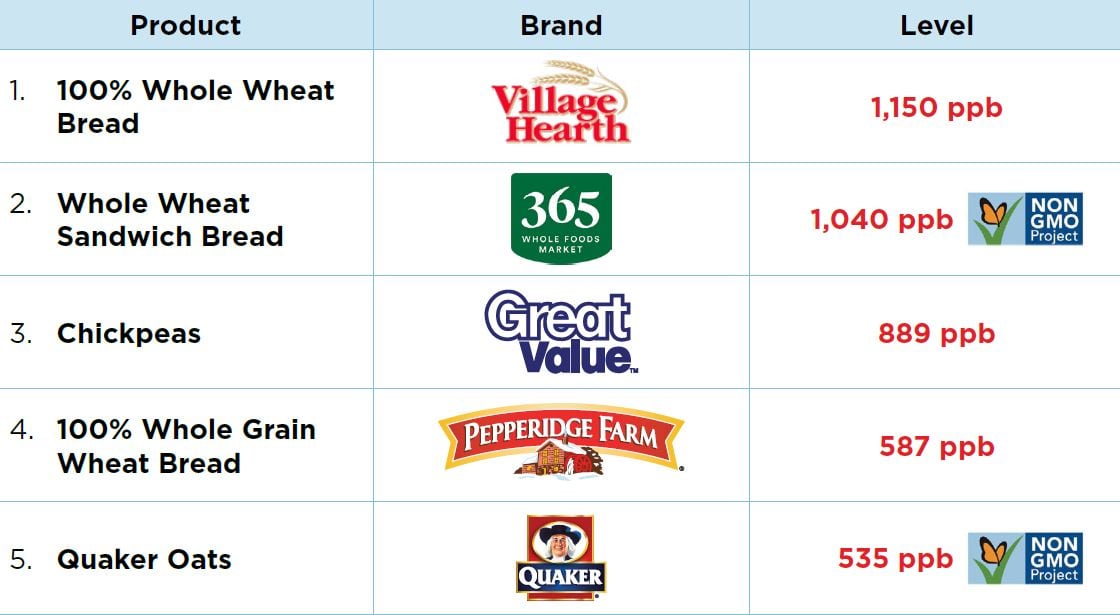
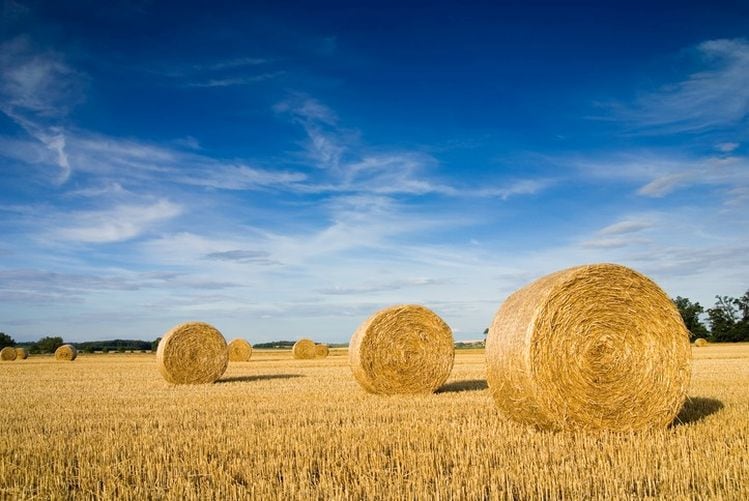
According to the National Association of Wheat Growers, about 30% of wheat acres in the US are applied with glyphosate.
However, the use of pre-harvest applications only impacts a very small percentage of crops: “The use of pre-harvest applications has remained constant for the last 10 years, around 2% of total acres.”
It added: “Cessna et al. (1994) examined levels of glyphosate in harvested wheat treated with glyphosate at different rates and at different times near harvest as grain moisture levels declined. In all cases, glyphosate residue levels measured below residue thresholds set by the EPA, regardless of application rates or timing.”
It also noted that under EPA rules, “with pre-harvest application, glyphosate can only be applied when the moisture of the wheat is 30% or less and must be at least seven days prior to harvest to ensure the wheat in the field is already dead and the herbicide is killing the weeds in the field. This application allows for the weeds to be killed, which then allows the wheat to continue to dry to a moisture level at which it can be harvested and stored. It also allows the combine to move through the field to harvest the crop without also harvesting the weeds.”
Meanwhile, an increase in no-till wheat acres has been made possible by the increased use of pre-emergence glyphosate in order to manage harmful weeds, added the NAWG, which said there are four potential uses for glyphosate in wheat:
- Applications before, during, and after planting, but before wheat emergence, to ensure minimal weed competition throughout the growing season.
- Fallow applications following harvest when no crop is present to keep weeds from using soil moisture.
- Pre-harvest applications to dry green weeds and allow the crop to even its maturity.
- ‘Crop destruct’ applications to a growing wheat crop when weeds, insects, disease or adverse weather preclude the ability to produce a viable crop.
Some regions are phasing out the use of glyphosate as a desiccant
So is it likely that more stakeholders will phase out the use of glyphosate as a drying agent?
Kellogg, for example, told us that it is “committed to phase out pre-harvest desiccation with glyphosate in our wheat and oat supply chains in our major markets – which includes the UK, France, the US, Canada, Mexico and Australia – by the end of 2025,” while Oatly’s oatmilk is certified Glyphosate Residue Free by The Detox Project.
In January last year, Richardson Milling - one of the major oat buyers in Western Canada - “launched a program focused on sourcing and processing oats that have not been treated with pesticides applied as a pre-harvest desiccant,” a decision the Prairie Oat Growers Association described as “not science based.”
Rowlands told FoodNavigator-USA that many farmers are now being pressured by buyers to use non-chemical approaches to desiccation, although efforts on this front vary by region.
“It seems that some regions of the world have taken the issue of reducing desiccation to protect public health seriously, including some areas of Canada, Germany, Italy and France. This has led to less pre-harvest spraying in those regions and it does not seem too difficult for farmers to use other standard drying methods.
“From what we have understood costs are only minimally increased when using other non-chemical drying methods.”
‘There is at least now conversation at Board level in some of the big CPG companies about this issue’
As for CPG brands, he said, despite a supremely challenging couple of years for the food supply chain, “We still see a trend of brands moving towards great transparency for their customers and to healthier products; in fact the pandemic seems to have increased the interest of consumers and brands in trying to avoid toxic chemicals like glyphosate in their supply chains. This is most likely because health has become many people’s number one focus.”
So are more big CPG companies with the clout to influence how crops are grown now specifying that suppliers must not use glyphosate as a drying agent?
“This would certainly be the easiest way,” said Rowlands, “as small and medium size brands have less power in the global supply chains. There is at least now conversation at Board level in some of the big CPG companies about this issue.”
He added: “Kellogg is the largest so far [to make a commitment about phasing out glyphosate as a pre-harvest desiccant], however other CPG companies are set to follow this year.”
Richardson’s move was also a “major move in the right direction,” he said.
Meanwhile, more than 100 brands and 5,000+ products are now certified as Glyphosate Residue Free, he added. “There was a lull in new sign ups during the peak of the pandemic but now we are seeing a lot of new interest in the certification again.”
Scaremongering?
But how does The Detox Project respond to industry stakeholders who accuse it of scaremongering by using words such as “alarming” and “dangerous” to describe trace levels of glyphosate?
“The clear response to this is that multiple independent peer-reviewed scientific studies have shown that the levels of glyphosate found in some of the products, if eaten regularly, could cause long-term problems for public health,” insisted Rowlands.
A spokesperson from Bayer (which owns Monsanto, a producer of glyphosate herbicides) directed us to the website of the EPA, which highlighted the results of a recent “highly conservative dietary risk assessment for glyphosate that evaluated all populations.” The “resulting conservative estimates of dietary exposure were not of concern,” it added.
The Bayer spokesperson also pointed us to the FDA’s Pesticide Residue Monitoring Program in which the latest data (from 2019) “found that all detectable glyphosate residue levels were below tolerance levels set by the EPA.”
According to Rowlands at The Detox Project, however: “The big problem is that both the [reference dose] in the US (1.75mg per kilogram of bodyweight a day) and the Acceptable Daily Intake (ADI) in the EU (0.3 mg/kg bw/day) for glyphosate have already been proven to be far too high by independent peer-reviewed studies.
“It is simply not yet possible to set a safe level for glyphosate exposure and anyone who attempts to do so is bending the science.”
Whole Foods Market, Walmart, Kellogg, Quaker Foods, General Mills, and Campbell Soup did not respond to requests for comment, while the Consumer Brands Association told us that "this isn’t something that we track or have the necessary expertise to comment on."
Courts give short shrift to glyphosate residue lawsuits

The Detox Project – which launched in 2017 and has since certified 5,000+ products from 100+ brands as ‘glyphosate residue free’ – was hit with a flood of industry inquiries following a report from the EWG on glyphosate in oat products, a high-profile ruling requiring Monsanto to pay millions in damages to a man who alleged its glyphosate-based herbicide caused his cancer, and a flurry of lawsuits vs big food brands over glyphosate residues.
However, courts remain skeptical of class actions challenging trace residues of the herbicide in foods and beverages.
Cases vs General Mills, Quaker Oats and Florida’s Natural Growers - or example - have all been tossed on the grounds that reasonable consumers would not be surprised to find trace levels of pesticides well below government thresholds in some foods.
In a July 2017 ruling tossing out a group of lawsuits against General Mills querying ‘natural’ claims on Nature Valley products containing trace levels of glyphosate, Judge Michael J. Davis said it was “implausible that a reasonable consumer” would believe that the products “could not contain a trace amount of glyphosate that is far below the amount permitted for organic products.”

